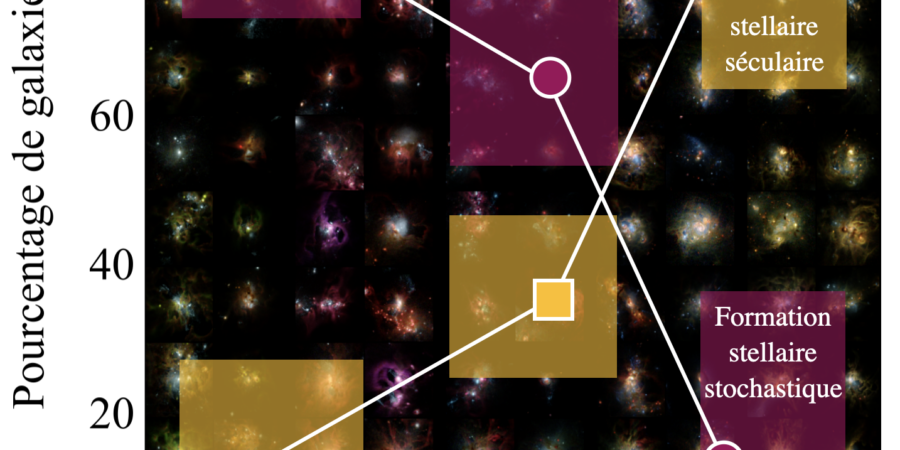
Most galaxies follow a tight relation between their stellar mass and their star formation rate, implying that they form their stars gradually rather than through violent episodes of starbursts. Constrained up to z=6, when the Universe was 1 billion years old, this relation, called the galaxy main sequence, seems difficult to reconcile with the stochastic star formation of the very first galaxies predicted by simulations. Thanks to JWST data from the JADES extragalactic survey, researchers from LAM have highlighted a transition between these two modes of star formation when the Universe was about 700 million years old. They have used a new approach to reconstruct the star formation history of galaxies in order to study the establishment of the galaxy main sequence in the primordial Universe. In this study, they also showed that the stochasticity of the star formation they measure is not sufficient to explain the excess of very bright UV galaxies at z>10 observed in several studies of the earliest galaxies.
These results are part of a publication in press in A&A and are available in open access (https://arxiv.org/pdf/2309.15720.pdf).
LAM researchers involved in this study are Laure Ciesla, Olivier Ilbert, Véronique Buat, and Rafael Arango-Toro.




